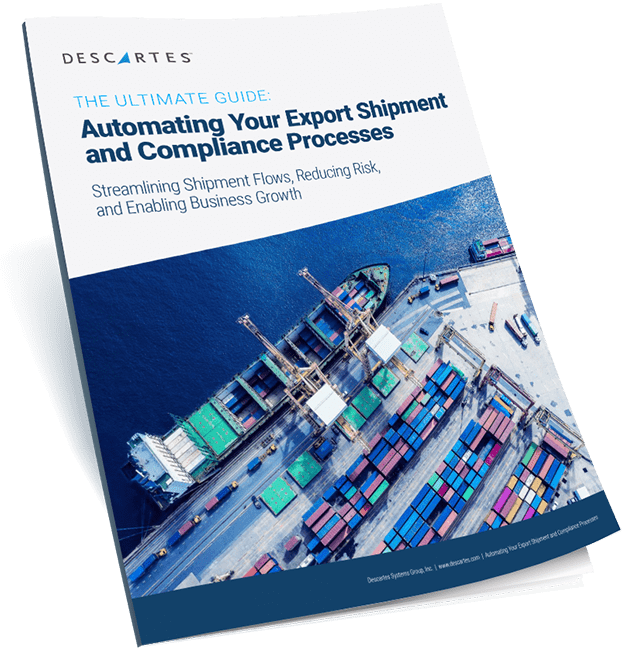Automating Your Export Shipment and Compliance Processes
Streamlining Shipment Flows, Reducing Risk, and Enabling Business Growth
Complying with export rules and regulations can be a daunting task.
Navigating internal business processes while maintaining compliance levels is complex for most organizations. Companies often struggle with multiple data sources and departments, and a lack of centralized visibility and control for compliance, including elements like licenses, documentation, or screening customers and trading partners against restricted and denied party lists.
This white paper provides insights on how your organization can build automated export processes that can help maintain international growth while remaining compliance.

Optimize Your Export Compliance Process
Without a doubt, the export compliance process is complex to plan, implement, and operate. But most important is the need to be able to keep pace with continuous regulatory changes to help maintain compliance on an ongoing basis.
It's vital to avoid committing an export violation by unwittingly entering into business dealings with denied parties or shipping to countries without fully considering trade restriction and embargo implications. Breaches of these regulations can disrupt day-to-day operations, result in fines and other penalties, and damage a company’s export business and reputation.
This is why many companies use export automation solutions to cost-effectively manage multiple data sources, both internally and externally, while utilizing their existing business systems. These solutions reduce risk by more efficiently complying with existing and evolving regulations, and they can help increase business growth by keeping pace with sales orders that need to be processed accurately.
Key Focus Areas Include:
Export Process Challenges
Consequences of Non-Compliance
Ways You Can Optimize Export Compliance Process
Reduce Risk While Enabling Business Growth
Best practices to mitigate risk
